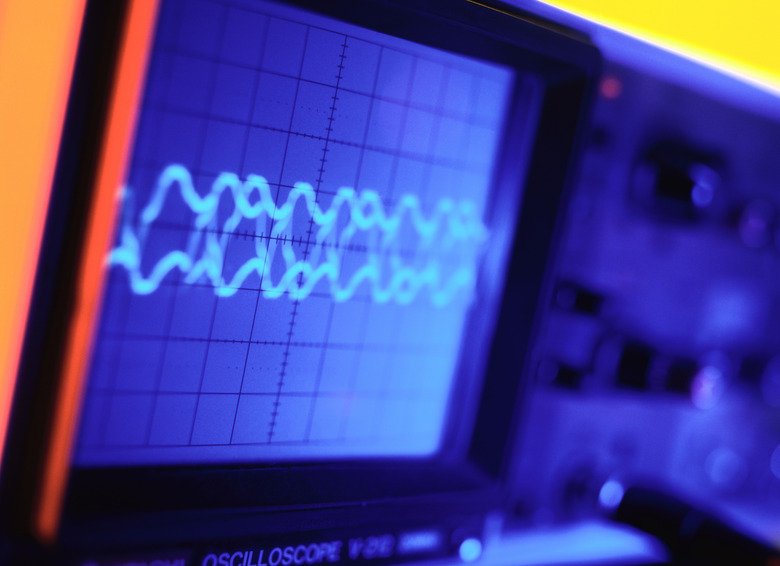How To Calibrate Oscilloscope Probes
An oscilloscope takes variation in signal voltage as a function of time and displays it on a screen. These devices are useful for analyzing circuits as part of maintenance or repair and are also a popular feature of undergraduate physics lab classes. Always calibrate an oscilloscope before you use it; never assume the factory settings are correct without checking them. To calibrate an oscilloscope, you'll use a signal whose voltage is known, then adjust the device until it reads accurately.
Step 1
Find the small metal cylinder or knob projecting from the oscilloscope labeled Probe Adjust. This outlet provides a standard signal you can use to calibrate the machine.
Step 2
Connect the probe adjust to the Channel 1 outlet on the oscilloscope using the cable. The alligator clip will attach to the probe adjust, while the BNC end of the cable will attach to the Channel 1 outlet.
Step 3
Find the knob to adjust the horizontal scale and the knob to adjust the vertical scale (both should be on the front of your oscilloscope near Channel 1). Adjust both scales until you can see a square wave on the oscilloscope screen.
Step 4
Adjust the focus using the Focus knob until the line on the screen is clear and sharp (not fuzzy and blurred).
Step 5
Measure the difference in voltage between the troughs of the square waves and the peaks. Take into account the setting on your scale. If your scale is set to 1 V, for example, each vertical box on the screen is equal to one volt. If your scale is set to 1 mV, by contrast, each box on the screen is equal to one millivolt.
Step 6
Turn the voltage calibration knob until the peak-to-peak voltage of your square wave is equal to the amount listed below the Probe Adjust on the oscilloscope.
Step 7
Measure the period of your square wave. This is the number of seconds from the beginning of one peak to the beginning of the next. Again, remember to take the setting for your horizontal scale into account. If you have the scale set to one second, for example, then each horizontal box on the screen is equal to one second.
Step 8
Divide one by the period to determine the frequency. If the period is 0.5 seconds, for example, the frequency is 2 cycles per second or 2 Hertz.
Step 9
Turn the frequency calibration knob until the period and thus the frequency of your square wave match the setting shown beneath the Probe Adjust on the oscilloscope.
TL;DR (Too Long; Didn't Read)
The most difficult part at first is adjusting the scale so you can see your square wave. Once you become more familiar with your oscilloscope's settings, however, this will become much easier.
Cite This Article
MLA
Brennan, John. "How To Calibrate Oscilloscope Probes" sciencing.com, https://www.sciencing.com/calibrate-oscilloscope-probes-10006564/. 24 April 2017.
APA
Brennan, John. (2017, April 24). How To Calibrate Oscilloscope Probes. sciencing.com. Retrieved from https://www.sciencing.com/calibrate-oscilloscope-probes-10006564/
Chicago
Brennan, John. How To Calibrate Oscilloscope Probes last modified March 24, 2022. https://www.sciencing.com/calibrate-oscilloscope-probes-10006564/
